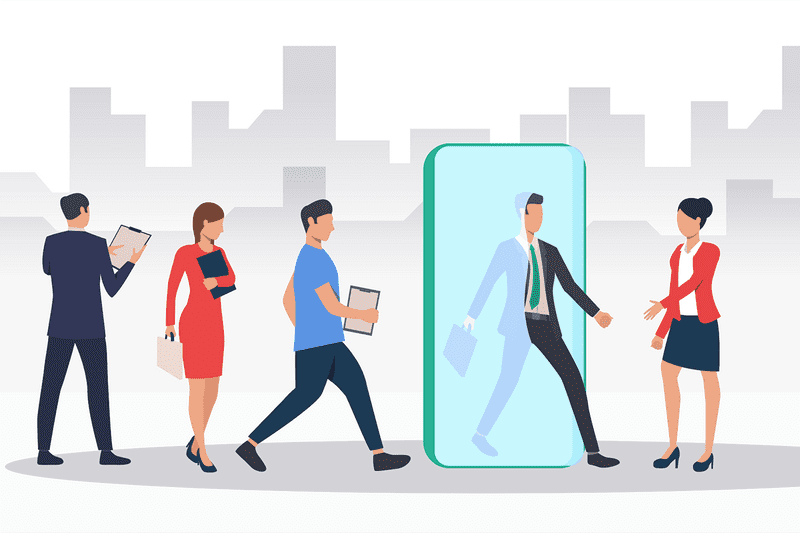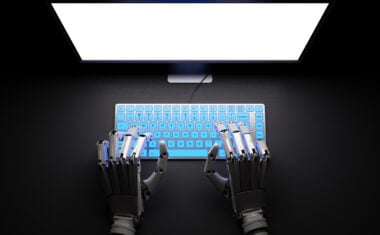Apple Data Scientist Interview: A Complete Guide

In this article
If you’ve graduated with a data science degree or bootcamp, put together an impressive portfolio, polished your programming and quantitative analytics skills, and have scored a coveted interview with an Apple recruiter or hiring manager, you might understandably be nervous about what comes next.
Interviewing for any role can be an intimidating experience, but the best way to ensure a successful interview is to be prepared for what you’ll be asked and to know what the company is looking for. Data scientists who have interviewed with Apple share their own experiences below.
Data science roles at Apple are highly competitive and difficult to land. Fortunately, enough people have successfully gone through the Apple data scientist interview process to share their experiences and offer valuable advice. Read on to learn more.
What does a data scientist at Apple do?
Unlike other technology companies that often hire generalist data scientists to perform analytics work on their products and services, Apple is known for favoring full-stack data scientists—people equipped with a broad array of data science skills such as data analytics, machine learning, software design, system design, and software engineering. The company hires data scientists based on the needs of its teams, which means the roles and responsibilities of an Apple data scientist can greatly vary depending on whether they’ve joined a team focused on marketing analytics or a team tasked with improving Siri.
Regardless of focus area, Apple’s data scientists have a few things in common: most have backgrounds in computer science, economics, math, or statistics; know coding languages such as SQL, Python, C++; can perform in-depth quantitative analysis of complex data sets; and are self-directed and can both work independently and collaborate with other teams.
Once inside the company, Apple’s data scientists fan out across the organization to meet the specific needs of the teams they join. For example, a data scientist with Apple’s Pay Analytics team will use advanced statistical, machine learning, and analytical techniques to analyze product performance and identify key insights. A data scientist on the Siri Search team will work closely with engineers to identify design opportunities to improve Siri’s intelligence and accuracy. And a data scientist on the company’s Data-Driven Acoustic Technologies team–a hardware division—will need to have a background in acoustics simulation and machine learning to prototype and develop audio algorithms and customer-facing audio features.
What skills does a data scientist at Apple require?
While it doesn’t hurt to be skilled in advanced data science areas such as deep learning and computer vision, some of the more common skill requirements listed in Apple’s data science job postings and mentioned by those who have interviewed with the company include data processing and analytics, a strong understanding of SQL and Python, knowledge of machine learning and statistical techniques, and strong communication.
In fact, across all of Apple’s data science job postings, excellent verbal and written presentation skills, as well as the ability to collaborate with others, is often the top requirement because the company’s data scientists need to be able to effectively explain to stakeholders their findings and recommendations.
Data scientists with knowledge of Apple’s hiring practices also report that the company prefers to hire those who have at least a few years of experience under their belt and, in some cases, an advanced degree in a related field.
Get To Know Other Data Science Students
Lou Zhang
Data Scientist at MachineMetrics
Isabel Van Zijl
Lead Data Analyst at Kinship
Esme Gaisford
Senior Quantitative Data Analyst at Pandora
What is the interview process for a data scientist at Apple like?
The Apple interview loop isn’t too different from companies like Facebook, Google, and Amazon. After submitting their applications online, candidates who make it to the interview round report of an initial call with a recruiter, followed by a technical phone screen, and an onsite interview either in Cupertino or another Apple campus where they complete a series of data science interviews with hiring managers, data scientists, and engineers.
- The phone screener
During the initial phone interview, applicants will speak with a recruiter, who will ask get-to-know-you questions. Candidates can also expect to run through their CV, discuss their prior work experience, describe projects they’ve worked on, and talk about why they want to work at Apple.
- The technical screener
The technical portion of the interview will assess a candidate’s skills and measure their understanding of data science and machine learning concepts. Candidates who have been through the process have shared on blogs and Glassdoor some of the questions they’ve been asked:
- Describe the difference between L1 and L2 regularization, specifically in regards to the difference in their impact on the model training process.
- How do you calculate a sample size?
- What is the meaning and calculation of ACF and PACF?
- Write a function to detect if a binary tree is a mirror image on both the left and right sub-trees
- How does XGBoost handle the bias-variance tradeoff?
- Suppose you have 100,000 files spread across multiple servers and you wanted to process all of them. How would you do that in Hadoop?
Depending on the role that a candidate is applying for, the technical screen might also ask case questions related to analytics, machine learning theory, SQL and Python exercises, and modeling questions.
- The onsite-loop
The onsite round typically consists of at least five interviews with Apple’s data scientists, product managers, and hiring managers. Candidates who have interviewed with Apple say that the experience is highly tailored to the role, so it’s important to understand the specific responsibilities and duties of the position before arriving at the interview. In addition to technical questions and whiteboarding solutions, candidates can expect behavioral and motivational questions, such as “How do you approach problems in a deadline environment?” and “Why Apple?”
What happens after the interview process?
Depending on the role, some candidates may be given a take-home technical challenge, for which they have three days to complete. The take-home challenge often involves machine learning, and some of the questions that have previously been asked include:
- Given a list of integers, find the index at which the sum of the left half of the array is equal to the right half
- How do you take millions of users with hundreds of transactions each, amongst thousands of products, and group the users together in meaningful segments?
- Given a list of strings, write a function in Python to return all the strings that are anagrams
Since you’re here…Are you a future data scientist? Investigate with our free guide to what a data scientist actually does. When you’re ready to build a CV that will make hiring managers melt, join our Data Science Bootcamp that guarantees a job or your tuition back!





